Looking for a way to reduce your stress and anxiety levels and increase your awareness? Look no further than meditation! As a popular mind and body practice, meditation can help you change your state of consciousness and gain peace and stability amidst personal, social, and economic struggles. Through mindfulness, you can gain a deeper understanding of your thoughts and emotions, accepting them without judgment and increasing your overall sense of awareness. Try our Meditation guide today to start reaping the benefits for yourself!
Meditation guide

Meditation is a popular practice of the mind and body that helps you decrease your levels of stress and anxiety. In addition, it is the best way for changing the state of consciousness and increasing your awareness towards your surroundings.
Nowadays, many social, economic, and personal struggles cause many people to stress and anxious. Therefore, people seek solutions to help ease their nerves and gain mental and physical peace and stability.
Meditating helps in gaining a healthier understanding of your thoughts and increasing your levels of awareness. In this process, you will learn to accept your emotions without running from them, understanding your thoughts in the pathway to mindfulness without any judgment.
History of Meditation:
Meditation has been done for years. Different religions around the world offer a variety of methods of meditation practice. Including Christian religious ceremonies, Buddhist sitting exercises, Sufi whirling, etc.
In addition to common religious rituals and cultural contexts, meditation can be used individually to overcome stress and pain.
The purpose of meditation:
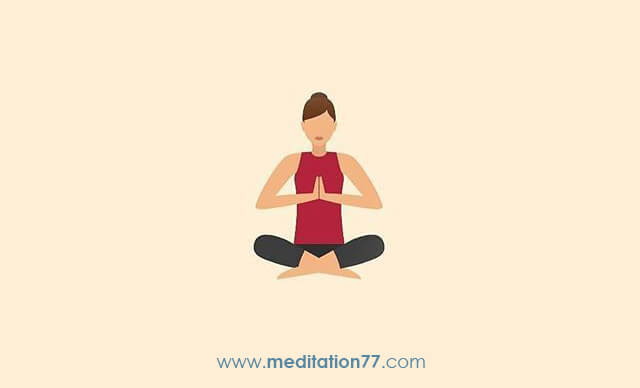
Meditation can help people relax from stress, stay healthy and heal patients. People who meditate regularly are less likely to experience anxiety and depression, as well as more joy and satisfaction in life. Meditation creates a deep relaxation in which you will feel balanced. The result of this balance of thought is an increase in insight, promotion of thoughts, and composure in dealing with problems. More peace and self-awareness and better acceptance of others also transform social relationships. Meditation can help reduce the symptoms of many diseases by creating stress relief conditions.
Meditation guide
The fundamental factors of meditation guide are concentration, silence and focusing on your breath. It is better to start the whole process every day in small periods. Then, you can double the time schedule gradually.
Benefits of meditation :
- Meditation has many benefits, such as:
- Being relaxed and less anxious
- Being focused and less scattered
- Be calmer, free from constant worries
- Gain a better understanding of ourselves, our lives, and others
- Increase positive emotions such as love and happiness in life.
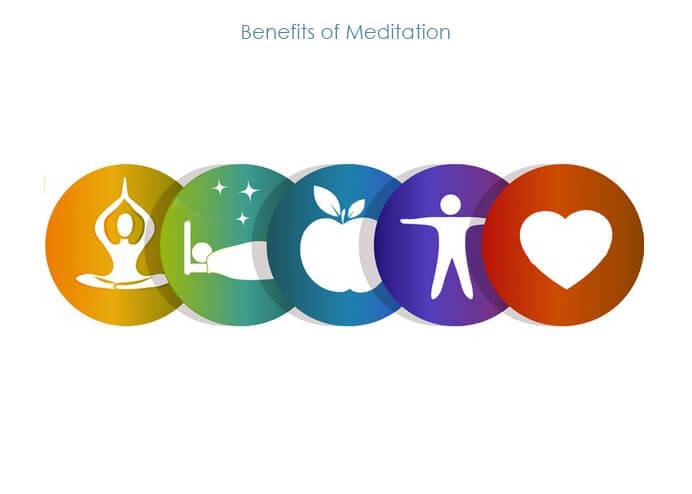
Most of us want a calmer, clearer, and happier mind. It makes us sad if we are anxious or in a negative state. This adversely affects our health and can affect our work situation, family life, and friendships.
If we are anxious or bored, maybe we should look for a way to feel better, meditation is the best option to help us overcome the weaknesses of our emotions without any negative impact on us.
Some of the effects of meditation on the nervous system include:
- Reduce blood pressure and improve blood circulation
- Decreased heart rate
- Reduce sweating
- Decreased breathing rate
- Decreased blood cortisol levels
- Reduce stress and anxiety
A brief list of the benefits of meditation:
- Peace of mind
- Improve concentration
- A better understanding of yourself, other people, and the world around you
- Be happier and more positive
- Reducing stress
- Becoming a more efficient person
- Be more patient
- Clarity of mind
- Make spiritual progress
- Clarity of thought, insight, and openness of mind
Movie Source : Mitch Manly
Types of meditation:
There are generally two types of meditation:
- Concentration Meditation
- Mindfulness Meditation
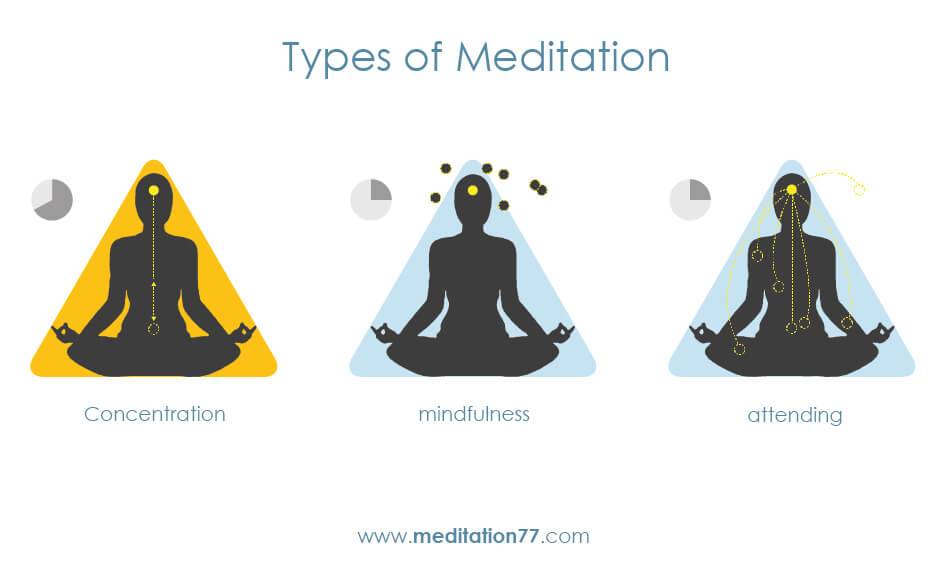
In meditation, one focuses on breathing, a real or imagined image, a sound, word, or phrase that is repeated slowly or aloud (mantra), or on specific movements such as Tai Chi, Yoga, Chi Kung focuses. Following the disappearance of focus, worry, and anxiety, the feeling of calmness replaces it. This relaxation has beneficial physiological effects on the body.
In meditation through thinking, one uses all one’s attention for awareness. Thinking takes place in a state of calm and to know oneself, and awareness of thoughts, natural feelings, perception, and feeling is obtained. In this way, peace of mind, self-control, and composure are achieved.
Different methods of meditation are a mixture of cultures and religions, but the basis of all of them is these two methods. For example, you can use one of the simple five-minute daily meditation techniques written by Selene Yeager.
In this simple method, all you have to do is find a quiet and unobtrusive place and sit down. Do not forget that your back should be straight and without curvature (hump). Look down, of course, do not stare at the ground and breathe very slowly, deeply, and regularly, continue with concentration and a feeling of gratitude to the Creator or infinite power.
If your thoughts are a little floating, there is no problem, if you feel heavy eyes, close your eyes, be very calm and continue this exercise every day. If you do this exercise twice a day and increase the time to twenty minutes, it will be much more effective. Don’t worry, you will do it easily, and you will see its amazing effect.
Meditation techniques
High-level meditation involves more sophisticated techniques such as clearing the mind for long periods of time that require a great deal of practice to master. This does not mean that meditation is not possible at the beginner level, but there are simple ways to do meditation, which we will discuss below.
There are various meditation techniques each suitable for different people and conditions.
Some of them are as follows:
Mindfulness method

This is one of the most popular meditation techniques mostly concentrating on your thoughts and observing them without any judgment.
Mindfulness is a way in which a person can become deeply aware of their thoughts and feelings. The goal of mindfulness is not to engage with or judge thoughts and feelings, but to understand and become aware of thoughts and feelings that appear spontaneously and involuntarily. With mindfulness, you can become aware of the way thoughts and feelings are expressed and processed in the mind so that you can have better control over them.
The practice of mindfulness is very simple. It is enough to try to experience your thoughts and feelings in the same way as they are at any moment and pay attention to how it occurs, how it affects you, and its changes. After practicing mindfulness for a while, you will be able to manage the way you experience emotions.
Spiritual method
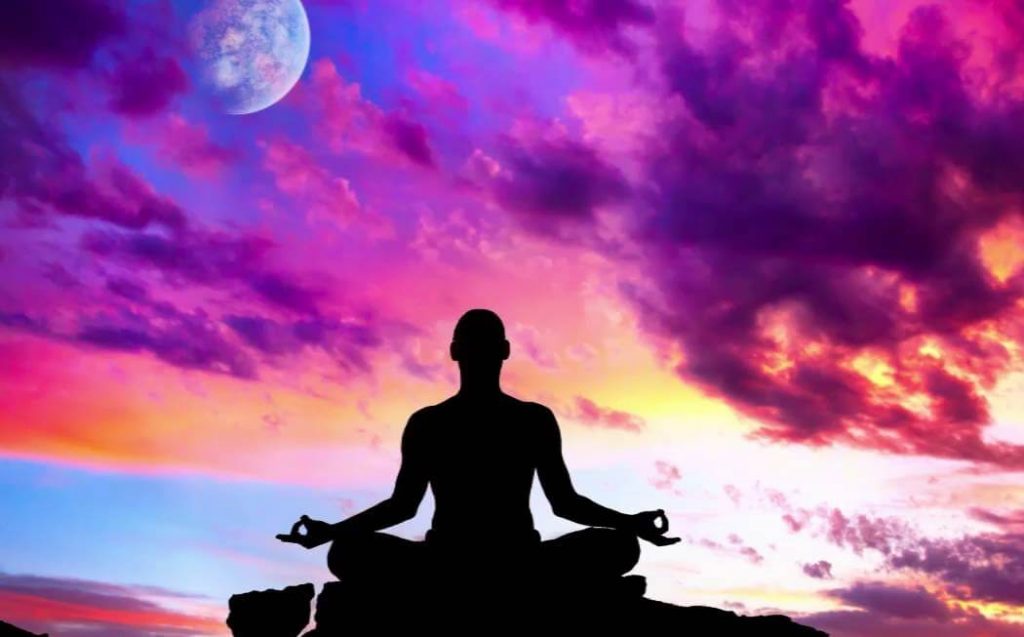
The spiritual method is similar to what we know as praying, in many religions and cultures. This method helps you connect with the universe and your inner self in a very deep manner.
Focused method
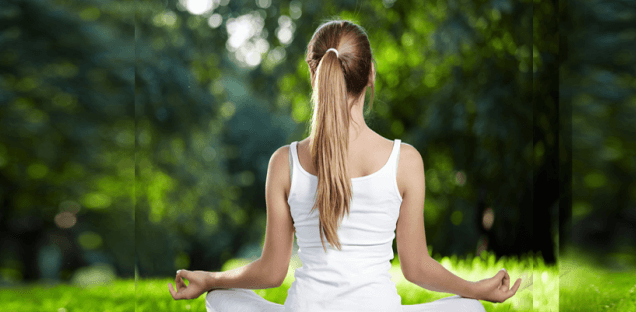
In this method, you learn to concentrate through your five senses by strategies surrounding but not limited to counting and breathing techniques.
There are several exercises to increase concentration in which repetition is an effective factor. A person may be able to concentrate for only a few minutes at the beginning of the meditation, but with more practice, he will focus on something much longer. By doing this, instead of following their own thoughts, which happen subconsciously, the person decides to go through them so that he can focus on what he wants. Focusing on abdominal breathing has been mentioned as one of the methods used. There are various other methods, some of which are:
Focus on a point without taking your eyes off it, which you can use to do things like a candle flame.
Repeat a simple word or sound at regular intervals focusing on this task
Listen to a short, repetitive sound at regular intervals, such as a drop of water focusing on it
Counting numbers from half to 100 and repeating them (these exercises will reduce depressive symptoms in the long run.)
Concentration is a cornerstone of mindfulness practice. Your mindfulness will only be as robust as the capacity of your mind to be calm and stable. Without calmness, the mirror of mindfulness will have an agitated and choppy surface and will not be able to reflect things with any accuracy.
Jon Kabat-Zinn
Movement method

This meditation technique is suitable for people who prefer to stay more active, and it helps you gain peace participating in activities that require physical movements such as going for walks in Nature.
Mantra method
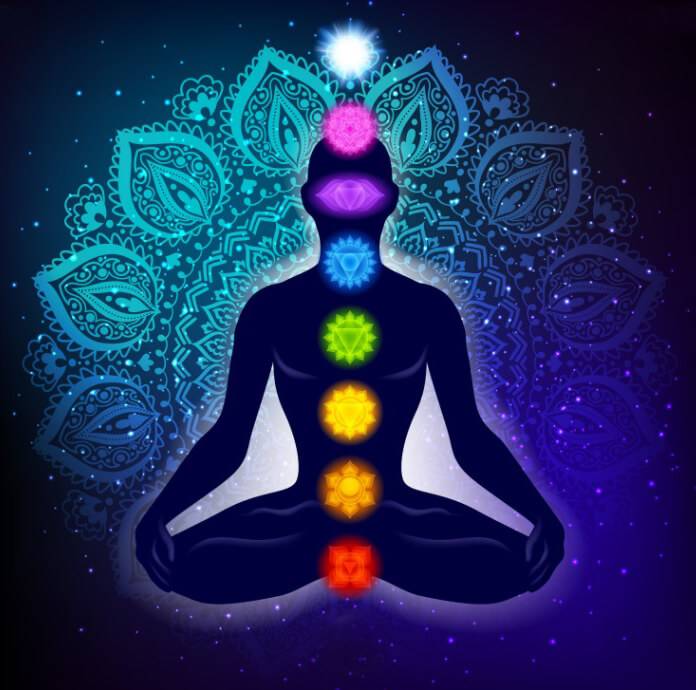
Through this method, you meditate, repeating a particular word, sound, or phrase in a loud or quiet manner.
Transcendental method
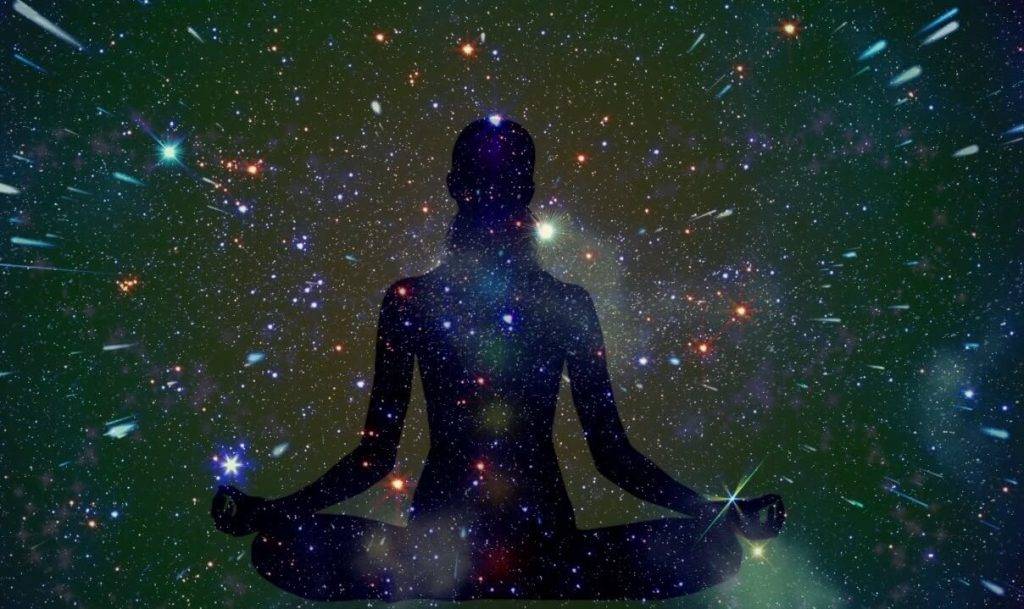
This is a popular practice similar to the Mantra method. The participants repeat a mantra, an act, or a verbal phrase suitable for their personal needs or condition.
Loving-kindness method

In this method, you should open your mind to kindness and acceptance to receive and send love from/to all organisms around you.
Visualization method

This practice helps reduce the stress levels by visualizing and imagining positive things such as success and personal achievements.
Progressive method
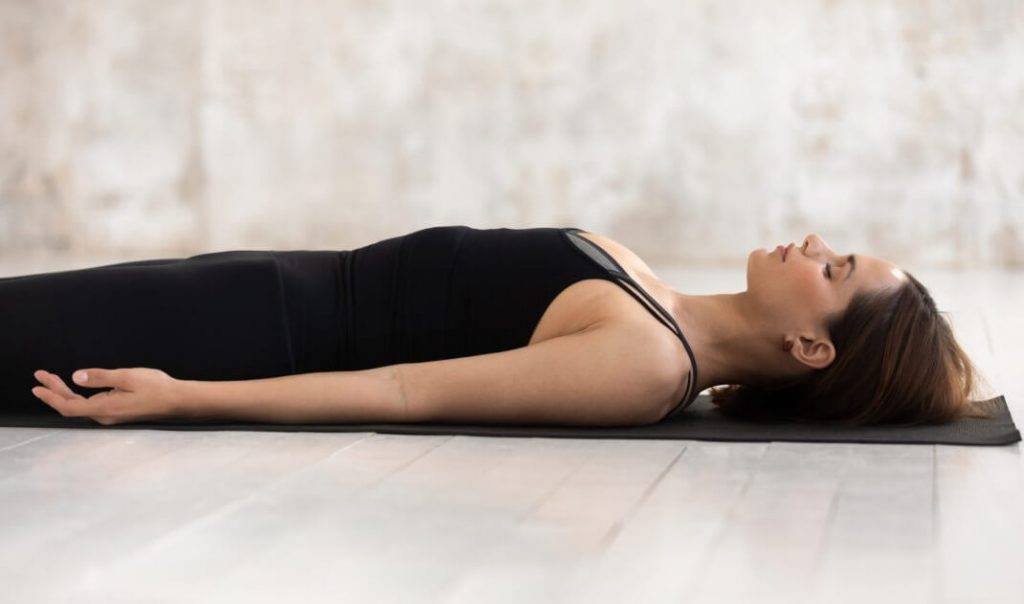
The progressive or body scan method helps reduce physical tension through continuous cycles of tightening and relaxing the muscles.
Breath-Focused Meditation

Breathing is the process that the human body does involuntarily by moving the chest and increasing the volume of the lungs and the entry and exit of air. In the lower part of the lungs, there is a part called the diaphragm plate, which moves by breathing without moving the chest. This technique, called abdominal breathing, requires a focus on breathing and relaxation and promotes concentration and peace of mind.
To do this, sit in the position where you are most comfortable. Relax all your muscles so that you do not feel tension and pressure in them. Close your eyes and place your hands on your abdomen and under your chest. Try not to move your chest while breathing, and instead move your abdomen gently up and down. This exercise helps to focus and relax.
Other methods of meditation
There are many methods for meditation, many of which require advanced training courses, and we have mentioned a few of them above. There are techniques such as the practice of affection, specific movement exercises in Buddhist culture, and mental relaxation, which are used today around the world as approved meditation methods and require specialized training. These methods are used in modern psychological approaches such as cognitive-behavioral therapies. Psychologists use these techniques in group therapy, stress management counseling, and individual counseling.
The three types of the simplest and most common types of movements in medical meditation are as follows:

- Sit on all fours, with each leg below the opposite knee. Keep your spine straight and bend your lower vertebrae slightly forward.
- Sit down and put your legs straight out. That is, place one foot under the opposite thigh and place the other foot on the ankle of the first foot. This puts the foot at rest. Straighten your spine. This is half the lotus movement.
- This type is similar to the first type, but the upper leg is placed on the leg muscle of the other leg instead of being placed under the thigh. Be sure to tilt your lower vertebrae forward in this movement.
Meditation steps
Before starting the meditation practice, you should determine your goal from these exercises, because if you set your goal before starting, you will get a good result.
Do the exercises in a suitable place or environment that is neither too soft nor too hard and uneven. Put yourself in the center of positive energies and make the space completely spiritual.
Do not do your appointments and work at the training site. Set aside time in your mind to meditate before you start practicing. Choose a practice time of 15 minutes to 30 minutes and repeat it in your mind.
If you wish, you can increase this time to one hour. By doing these things, purify your mind and soul and do not create imaginary and superstitious images for yourself so that you can overcome the temporary joys and sorrows and empty belongings.
Meditation music :

As mentioned before, meditation has different types and is done in different ways. Depending on your taste and connection to meditation, you can choose music that calms and concentrates while practicing or meditates in silence. But if you want to meditate with the right music, it is better to use music that is calm and gentle and at the same time creates a relaxing atmosphere for you, do not take your mind away from the meditation space. Here are some common types of meditation music.
Indian meditation music :
India is one of the countries with a long history of meditation and has music for practicing meditation that is used in Indian temples.
Tibetan Buddhist Meditation Music :
This type of music is also very suitable for meditation because its melody is very calm and uplifting and at the same time it creates a suitable atmosphere for concentrating during meditation.
Far East Music Meditation (Japan, China, etc. ):
This type of music is also great for meditation because it is rooted in the culture of those countries and a country like Japan, awareness training and breathing and concentration exercises have been popular since ancient times, and at the same time, it has very pleasant music.
Other countries also have a variety of pleasant and suitable meditation music that the choice of music should be completely in accordance with the taste of the person who wants to cultivate the habit of meditation and enjoy this experience.
Morning Meditation :
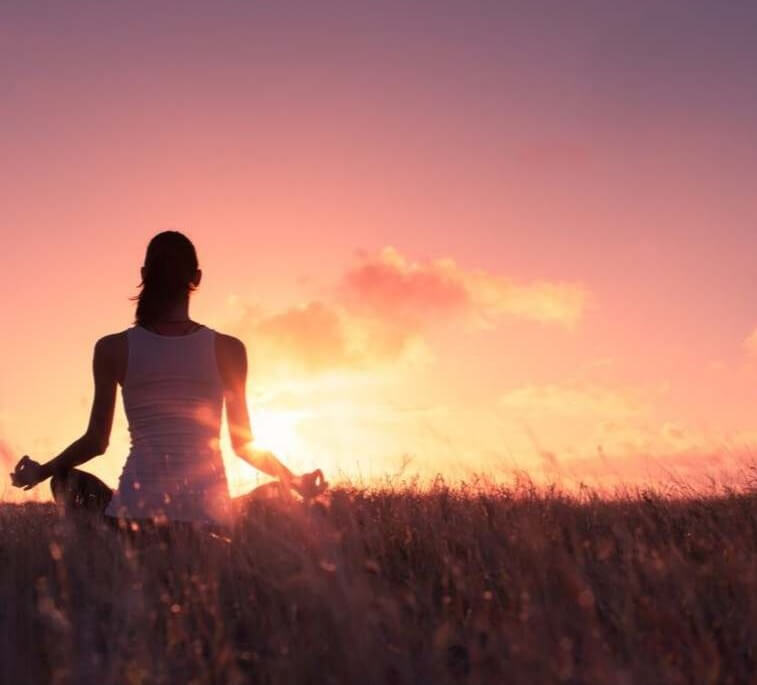
Some people believe that the best time to meditate is in the morning and right after waking up. This is because when we start our day with a morning meditation, we are actually giving ourselves the best opportunity to be aware, refreshed, and feel alive all day long before we do anything else, and therefore we can during The day we have better relationships with others, be kinder and less involved in wrong judgments, and our day will go with less stress and pressure. When you meditate in the morning and your mind becomes truly calm, your perspective also changes, and over time you will find a more positive mindset about yourself and the day ahead.
Before meditating, consider the following:
Meditation is generally suitable for everyone, but for those who have certain physical conditions or mental fears or phobias, it is better to take the necessary precautions in their exercises.

Low blood pressure:
You may feel dizzy after a 15-minute meditation session because sitting in one place for long periods can lower your blood pressure. So it is better not to get up after a quick workout and wait a while for your consciousness to normalize.
Cardiovascular diseases and hypertension:
People with heart disease or high blood pressure should avoid overeating before meditating, as this can increase their heart rate and blood pressure during exercise.
Intense fears and emotions:
If you experience feelings during meditation that severely disturb your concentration, it is best to stop exercising and regain your composure by taking deep breaths. Then continue meditating, but if these feelings, such as fear or confusion, were such that there was a physical manifestation such as palpitations or cold sweats, stop the exercise and postpone it until you are calmer.
Improper sitting position:
Your sitting position should be such that there is no pressure on your muscles and spine and do not try to sit up straight or put your arms and legs in an awkward position because you will be physically injured and your focus will be completely disturbed.
Frequently Asked Questions
Meditation is a practice that involves focusing your attention and calming your mind. It can take many forms, including mindfulness meditation, transcendental meditation, and yoga meditation.
There are many potential benefits of meditation, including reduced stress and anxiety, improved focus and concentration, increased self-awareness, and better sleep. Some people also report experiencing a greater sense of inner peace and calm.
There are many resources available to help you get started with meditation, including books, apps, and online guides. It’s also a good idea to start small, perhaps by meditating for just a few minutes each day, and gradually increasing the amount of time you spend meditating as you become more comfortable with the practice.
While there are traditional meditation postures, such as the lotus position, you don’t need to sit in any particular way to meditate. The most important thing is to find a comfortable position that allows you to remain alert and focused.
Yes, anyone can meditate! While it can be challenging to quiet the mind at first, with practice and patience, anyone can learn to meditate and experience the benefits of this powerful practice.
Conclusion:
In conclusion, meditation is not about changing yourself or becoming a better person, but rather about quieting the mind and freeing it from the cluttered thoughts that can impede true inner peace. With daily practice, anyone can make meditation a part of their life and use it to increase their awareness both individually and in social situations. It’s important to remember that we can’t always control what happens to us, but we can change our perspective and create positive experiences out of even the most challenging situations. Meditation is a simple yet powerful tool that can help reduce mental and physical stress by decreasing cortisol levels and promoting relaxation. We recommend choosing a suitable technique and making meditation a regular part of your routine.
You might also be interested in: How to meditate ?
You might also be interested in: Beginner Meditation
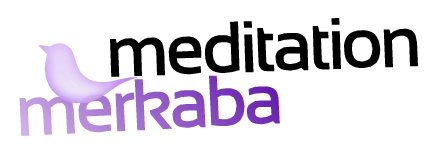


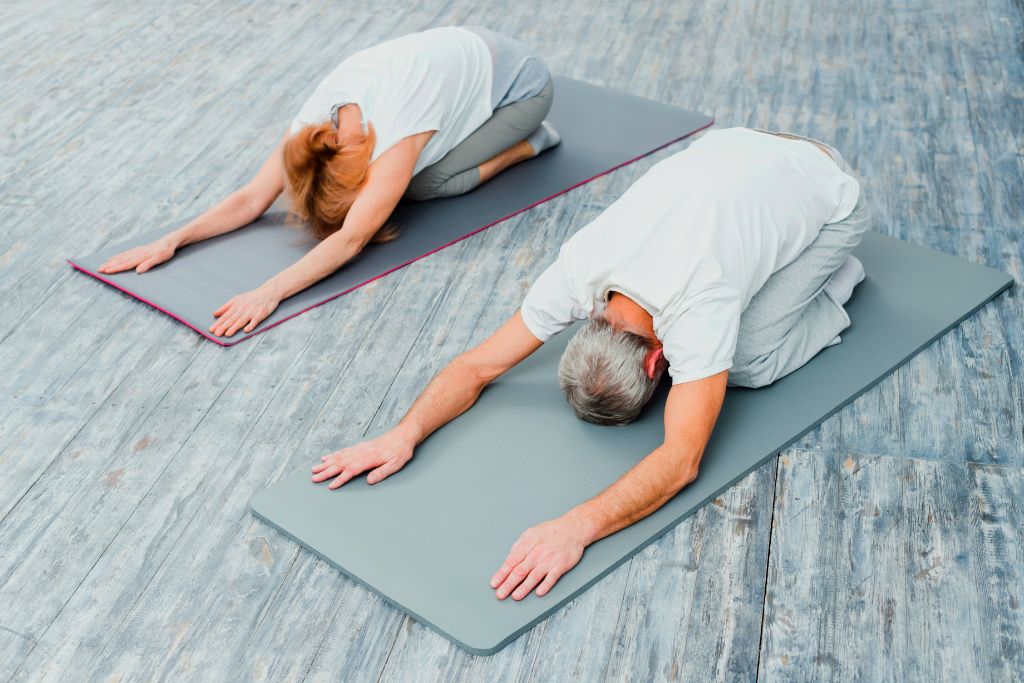







4 Comments. Leave new
Your article on the benefits of meditation was eye-opening! Thank you for sharing such valuable insights.
Thank you for your kind words! We’re delighted that you found our article informative. There’s much more to explore on our website, so feel free to dive deeper into the world of meditation and its benefits!
Your website is my meditation sanctuary. Grateful for this resource!
Thank you for your kind words! We’re honored to be your meditation sanctuary. Feel free to come back anytime for more serenity and guidance.